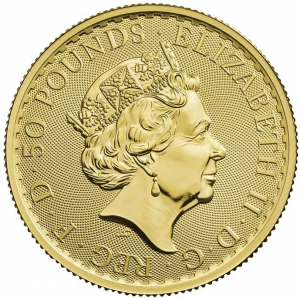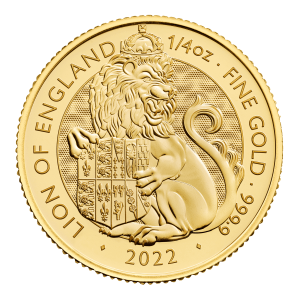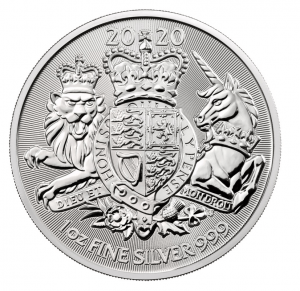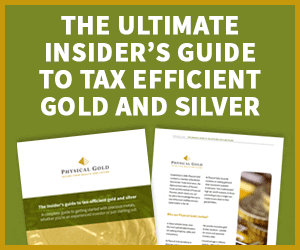German Gold Repatriation
Germanys Bundesbank has officially demanded a gold repatriation of 50% of its total gold reserves back from the United States Federal Reserve. Is this a cause for concern? Does it reflect Germanys inside knowledge of the severity of the Euro crisis? Should the holders or owners of gold ETFs follow suit? And what does this mean for the rest of the world?
Are we really shocked that Germany is starting to wake up to the reality that the dollar is no longer the worlds safe-haven asset and the U.S government is no longer a trustworthy banker for foreign nations?
In a word no.
Germanys request for its gold does not bode well for the future of the dollar. In fact, the Bundesbanks official statements are all you need to confirm the Germans waning faith in the U.S. The Fed has already refused to submit an audit of its holding on Germanys behalf and one cannot help but wonder if there is enough gold available to satisfy Germanys request.
Download our FREE 7 step cheat sheet to successful gold investing here
The Germans have given the U.S seven years in order to complete the transfer. Most would deem this time line as excessive and unnecessary but people in the know understand that this allows the Fed to save face and to prevent other depositors claiming their gold reserves in order to avoid a run on the Fed.
Other commentators are saying that If the US don’t have all the gold necessary to satisfy Germanys request they will have enough time to print more dollars to buy more gold on the open market. However such a move could substantially increase the gold price whilst depressing the dollar. The U.S seems to be in a slight quandary
With fiscal cliff talks looming and discussions over the debt ceiling, this request could not have come at a worse time. To make this all worse The Netherlands and Azerbaijan are also discussing repatriating their foreign gold holdings. How long before the rest of the international community follow suit?
Its not completely accurate to say that were in unchartered territory. Germanys repatriation mirrors what happened in the 60s under Nixon rule. The fear back then was that the U.S was not doing enough to maintain the integrity of its dollar and as a result Germany, France and Switzerland redeemed their gold reserves. This repatriation was coined the Nixon shock which propelled chronic inflation throughout the 70s and a contemporaneous rally in gold.
Are we repeating history? Ironically only time will tell
What is the fiscal cliff?
As America approached the Fiscal cliff, perhaps I’m on my own in saying that the amount of money the U.S government have, owe or print is completely confusing. The Fed’s recent budget cut looks more like a phone number than it does a hair cut off its current debt ceiling. Some of us look at that number ($38,500,000,000) and think that if the U.S can cut spending by that amount then surely things have to start looking better. But – what do we know? How does one empathise or resonate with the running of a country?
Fiscal Cliff put in a much better perspective:
- U.S Tax Revenue: $2,170,000,000,000
- Fed Budget: $3,820,000,000,000
- New Debt: $1,650,000,000,000
- National Debt: $14,271,000,000,000
- Recent budget cuts: $38,500,000,000
Let’s now remove 8 zeroes and pretend it’s a household budget:
- Annual Family income: $21,700
- The money the family spent: $38,200
- New debt on the credit card: $16,500
- The outstanding balance on the credit card: $142,710
- Total budget cuts so far: $38.50
It’s clear that these budgets cuts do little more than confuse us! It’s obvious spending cuts do more harm than good whilst we all know that the inevitability of printing more money shrinks the purchasing power of the annual family income…
Control debts
The New Year has heralded new warnings to Chancellor George Osborne. He already had to admit recently in his Autumn Speech that his austerity measures hadn’t quite hit the mark. This meant they would remain in place for a further two years than planned for the UK to successfully control its debts. The spending cuts and sluggish economy would now remain (at best) until 2018 rather than 2016.
The problem with such plans is that their time-frame is predicated based on everything going to plan. If tax revenues fall, unemployment rises and benefit claims increase, then the plans start to veer off course and our repayment takes longer.
Possible UK downgrade
So the last thing Osborne wanted to hear as a New Year warning from leading economists was that the UK was now set to lose its much coveted AAA rating. This warning itself is partly caused by the Treasury admitting that controlling the national debt will now take longer. The problem is that such a downgrade would have severe implications to Osborne’s plans and indeed to the investment market.
Standard & Poor’s, Moody’s and Fitch – the world’s three largest agencies – have all put the AAA rating on ‘negative outlook’ with a downgrade expected soon.
The major consequence would be to drive up the UK’s borrowing costs meaning it would take far longer to repay debts. This would be passed onto businesses and households, further slowing any chances of recovery. The less transparent effect could be a loss of confidence and sentiment towards the UK – leading to less investment and slower growth.
While this is undoubtedly negative news for those in the UK and a majority of investors hoping markets would pick up soon, it could provide a huge opportunity for gold investors. Firstly, as the world’s safe haven asset, such a UK downgrade in itself would see the underlying gold price rise, as the UK is a major global trading partner. The natural reaction by the investment world would be to seek a safe haven away from traditional currencies and gold provides this. It would also likely see central and commercial banks shift more money out of Sterling and into gold to protect themselves from depreciation.
When the US was downgraded in August 2011 we saw the gold price spike up to record levels. The additional bonus for UK investors would be that a UK downgrade would likely see Sterling fall against the Dollar – meaning further gains in the value of their gold if they bought it in the UK currency. That’s because the value of gold in the UK rises as Sterling falls against the Greenback.
All in all, it makes sense for those in the UK looking to start the New Year with stability and certainty to buy gold if they don’t already own any.
Fiscal Cliff
Fiscal cliff is the widespread term used to describe the paradox that the U.S. government will face at the end of 2012, when the terms of the Budget Control Act of 2011 are scheduled to go into effect.
The U.S will face tax hikes and a series of spending cuts which will have a dramatic effect on the economy. A combination of higher taxes and spending cuts would reduce the deficit by an estimated $560 billion but the policies set to create this saving would cut GDP by 4 percentage points in 2013 which could send the economy into a spiral of negative growth.
Estimates predict that unemployment would rise by 1% with the loss of two million jobs.
What strikes me as particular unusual is that the market anticipates the Fed to announce a $45 billion monthly Treasury buying scheme that would push the central banks balance sheet to almost $4 trillion.
It seems that Peter is being robbed to pay for Pauls future anticipated mistakes. People will have to endure tax hikes, spending cuts, unemployment and negative growth for the Federal Reserve to turn around and create a loss far bigger than any saving they are trying to create!
Unfortunately, the fiscal cliff isn’t the only problem facing the United States right now. At some point in the first quarter, the country will again hit the “debt ceiling” – the same issue that roiled the markets in the summer of 2011 and prompted the automatic spending cuts that make up a portion of the fiscal cliff. The summer of 2011 for Gold bugs may be a slightly nostalgic season for 2011 when the market saw more than 25% growth in 8 weeks.
Everyone is expecting the Fed to print more money and keep buying securities, Michael Smith, the president of T&K Futures & Options in Port St. Lucie, Florida, said in a telephone interview. The best hedge against a decline in the value of the dollar, in most peoples minds, is gold and silver.
We all know that gold is set to continue soaring in value over the medium term. All the commodity analysts around the world have revised their expectation upwards now that ‘big spender’ Obama has been re-elected.
It doesn’t take a genius to realise that the weak Dollar, a crumbling Euro and further tensions in the Middle East will all contribute to physical gold rising in value as the natural safe haven asset. But there’s also an unexpected source of fuel to this brightly burning fire. Our old friend – the banks.
Harsh bank collateral requirements
You see, while the banks have been blamed as the cause for your equities and bonds crashing in value, the very same institutions could be set to provide a huge catalyst to your gold holdings. The credit crunch and subsequent global crash have rocked the very foundation of the global economy and how money is leant and borrowed. It’s universally agreed that changes have to be made to ensure this doesn’t ever happen again. The obvious revision is to the way banks themselves lend and just as importantly the prudence they take with bank collateral for bad debts.
When a bank lends out money, it has to put a percentage away as bank collateral, a type of reserve to cover any losses from bad debts. This in theory protects the bank and other lenders/borrowers from suffering losses should a debtor fail to repay debt. The Basel accord is a set of laws set by influential central bankers to determine how much capital banks should hold and in which form this capital can be.
The types of assets financial institutions need to hold are split into three

Gold will be used for bank collateral
However, the financial world we live in has changed beyond all recognition, and the powers who set the capital ratios for banks realise this. So the latest version of these rules, known imaginatively as Basel III, looks set to address this. These rules for 2013 address two areas. Firstly, it increases the overall ratio that banks will need to hold in capital. Secondly it’s set to change some of the asset classifications with the most significant change coming to gold! Gold is set to become a Tier 1 asset alongside cash.
This is the first step towards a gold standard with institutions such as the Bank for International Settlements (BIS) recognising gold’s value alongside cash itself.
As BIS notes in its progress report on Basel III implementation:
“At national discretion, gold bullion held in own vaults or on an allocated basis to the extent backed by bullion liabilities can be treated as cash and therefore risk-weighted at 0%.”
Now, we’ve witnessed a steady shift in the holdings of Central banks from holding reserves in Dollars towards a heavier gold holding. They realise that a fast depreciating Dollar does nothing for their reserve levels and only gold can provide a reliable store of wealth. I’m sure banks have also been tempted to shift their reliance on holding paper currency as capital but the traditional tiering ratio has prevented this. Now they have a compelling reason to re-address this balance. With gold set to become the same as cash we will no doubt experience aggressive bullion buying from all the commercial banks in a bid to diversify their capital.
So rather than dwelling on how the banks have destroyed the value of your paper portfolios, recognise the opportunity the banking crisis now offers you.
Buy gold today and watch its value rise, not only from the obvious economic and political instability we’re experiencing, but also from the helping hand the banks are about to offer.
Obama is re-elected for yet another term as President and the US are now stuck with a descending economy for at least the next four years! I’m at a loss for words! Has this really happened? Are we heading for the “fiscal cliff” of higher taxes and spending cuts with a President that thinks that health care is more of a priority than our contaminated economy? The answer is yes! It’s Groundhog Day and central banks better turn on their printing machines because Obama has already indicated another round of monetary easing.
Obama: What it means
1) As Obama closed in on a “victory”, the Dollar lost significant value and prompted investors and countries alike to trigger a mass sell of the greenback.
2) Given the markets’ understanding that Obama’s plans for the US is catastrophic for the global economy, analysts are expecting inflation to escalate.
3) Since Obama’s win – the value of Gold has jumped 3% with a host of predictions pointing towards further imminent and long term price increases.
4) Further gold price drivers are international crises such as the Israeli/Iran situation, the recent Syria/Turkey border incident and the longer term threat that the Muslim Brotherhood, which now controls Egypt, will seek to extend its influence in the oil-rich countries in the Middle East tinderbox.
5) On the supply side, gold miners are running out of high grade ore, there are problems with labour in South Africa, and both working and capital costs have risen substantially
6) Central banks have now stopped selling their gold and become big buyers.
It’s finally obvious why more and more of the world’s rich are moving their wealth and other valuables away from the economic turmoil in the US and into gold as a safe haven and a hedge against escalating inflation.
Mounting debt
Debt is on the rise. The economy seems to be quickly and quietly spiralling out of control. The feelings of Nostalgia overwhelm us as the prospect of European states falling into default catch us off guard once again. The Federal Reserve has committed to injecting more than $40bn into the economy every month with no upper limit on this printing frenzy. Japan and China are now going through the motions in order to follow suit. Confidence in financial markets is diminishing owing to weak growth prospects, high inflation and ineffective controls.
This shouldn’t be a zero sum game and fortunately for our clients it’s not. As all of the above escalates, gold has been steadily rising. Gold has extended the biggest quarterly gain in more than two years on speculation central banks’ stimulus will spur investor demand. The questions from investors constantly change but at the moment it’s not a question of “when” it’s, “how high?”.
As more currency is printed in the global Quantitative Easing programs, the value of traditional (or Fiat) currency is diminished. Along with reduced value, is falling perceived value as both individuals and institutional funds managers realise more money doesn’t equate to more value.
As a safe haven asset, gold benefits in times of falling currencies, especially the US Dollar. Investors flock to buy gold during these periods and it’s easy to see why. As a precious metal, gold cannot simply be printed like paper currencies. So while their value is undermined, gold simply cannot follow suit. It has to be discovered and mined. The fact that all the gold discovered in the entire history of the earth would fit into a cube the size of the Eiffel Tower, demonstrates how lack of supply acts as a support mechanism for its value. Sadly for paper currencies, the central banks can simply continue to print more, further undermining the value.
QE3 – where will it stop?
Over the last 30 days the value of gold has increased by over 10% with many analysts pointing out that we have only seen the tip of the iceberg. Whilst the fed has announced its intention to inject another $40bn every month – the real worry is that this particular prescription is an unlimited one. Some refer to this stimulus topping more than $1.5 trillion and with no end in sight the dollar could lose significant value.
“Even when the unemployment rate begins to come down decisively, we’re not going to rush to remove policy,” Bernanke said at a press conference
Japan has now joined the United States and Europe in mounting more stimulus measures to boost its economy.
As the world continues to print more and more money, currencies will depreciate and inflation will trickle upwards. The two effects together will mean that people’s cash held in bank accounts or otherwise will need to yield more and more interest to break even with the cost of living. Do you see banks increasing interest rates any time soon?
The relevance this has with gold investment is that the dollar has an inverse relationship with gold; as the dollar loses value – it takes more of it to buy the same ounce of gold thereby making gold more valuable. Furthermore as inflation pushes up the cost of goods and services it also pushes up the value of gold and people rely on this trend in order to keep up with the rising costs of living.
As other central banks follow the lead set by QE3, gold’s appeal will strengthen and people will exchange their depreciating cash for gold that’s increasing in value.
Tax free options can increase returns
An interesting trend to note especially during our current economic climate is tax avoidance. With people generating less income from various asset classes, they are constantly seeking tax free solutions to minimise their overall tax liabilities to offset their losses.
In July 2012 the French government announced it was to increase taxes on foreign-owned second homes. Capital gains tax (CGT) on property sales would rise from 19 per cent to 34.5 per cent. The extra in each case was being labelled a “social charge”.
Clearly – Governments that are cash stricken are clutching at straws. Increasing taxes is only one way that a country can raise finance. The other prescription offered by the Fed is to simply print more money! But the two together is a way of the fiscal system having two bites of the cherry.
Download the FREE Ultimate Insiders Guide to tax free gold investments here
Ben Bernanke suggested last Friday that the bank might inject more money into the economy

Demand for tax free gold
Some analysts refer to gold’s increase as a forgone conclusion, a question of when as opposed to if. These people of course expect to maximise growth but they also want to legitimately minimise tax exposure. What if in addition to QE, governments start to mimic France’s latest CGT ploy?
The most noticeable trend amongst Physical Gold Ltd’s (PGL) clients is the overwhelming demand for Sovereigns and Britannia’s over the last few months. Both of these coins are “investment grade” which means that no VAT is payable but the real distinction between these gold coins and all other gold is that they’re CGT Exempt!
Investors have found a way of not only using gold as a saving mechanism and an insurance policy but also as a further guarantee if gold continues to rally – No Tax liabilities!
A further trend demonstrates that owing to the tax implications of these coins, the increase in value can sometimes be higher than the rising price of all other gold. Who now has two bites of the cherry?
By Luke Jackson (Intelligent Partnership)
“Why is physical gold not held in every investment portfolio?”
The price of gold over the last 10 years, and most notably since the start of the current financial crisis, has outperformed virtually every other available asset class with average (real) returns of over 25% per annum. Despite this performance, gold is still seen as a luxury good and one that is out of reach for the run of the mill investor.
A recent survey of 1,000 investors undertaken by the US based precious metals provider Gold Bullion International LLC (GBI) identified the types of assets investors hold as part of their investment portfolio. The survey looked at the investments currently held and their attitude towards investing in physical assets such as gold. As well as being essential market research for physical gold suppliers, the results of this survey also highlight the lack of understanding many investors have for investing in physical gold and the role it can play in their portfolio.
Download our FREE 7 step cheat sheet to buying physical gold here
Survey Results:
The survey highlighted increasingly strong demand for investment in gold, be it through physically held assets or pooled investment vehicles. More than half of respondents (63%) saying that they would like to own a physical asset like gold coins or bullion as part of their investment portfolio. A further 29% said they would prefer to invest in the gold market through pooled, non-physical assets like gold stocks and mutual funds.
In contrast only 2% of those questioned currently own investment grade gold. This in itself represents a huge gap between those who believe in gold as an asset class and would like to invest, and those who have taken the steps to hold physical gold in their portfolio. A large number of investors (44%) felt that they did not know enough about physical gold as an investment asset and therefore had not seriously considered including it in their portfolio. Investors felt that gold is too difficult to purchase (37%) with 22% of respondents not knowing how or where they can purchase gold.
With the correct marketing and support there is huge potential in the market for physical gold companies, with more than half of those questioned in the survey (51%) saying that they would own physical gold bars or coins if recommended to them.
How gold should be used in an investment portfolio:
A small allocation of gold can help to balance a portfolio and be used as a hedge against inflation and more volatile investments such as stocks and shares. The World Gold Council (WGC) recommend that adding a discrete allocation of gold, between 3 & 7% can allow a portfolio to achieve the same returns but with a much lower degree of risk. Some analysts now believe that, with the Eurozone crisis and the threat of further Quantitative Easing (QE) in the US, up to 25% of an investors’ portfolio should be held in gold, with a further 25% in cash and the remaining split between riskier traditional investments. Gold can have the role of a “Safe Haven” asset, as it is not controlled by Governments, is in very limited supply and will always have a value, unlike stocks, shares or paper currency.
Ways of investing in gold:
Exchange Traded Funds (ETFs), gold funds and shares in mining companies give investors exposure to gold and are all influenced by the performance of the spot price of gold. These options tend to be heavily geared, and therefore can allow for largest gains and losses than the actual change in the spot price of gold. Added to this, there is also counterparty risk, liquidity risk and management charges, which all can have an impact on potential profits and the suitability of holding these types of gold investments.
Futures are another option for investors, although are particularly risky and therefore are usually only used by sophisticated and speculative investors, rather than those looking for long term portfolio growth or security. Futures allow physical gold to be purchased in advance, with a price being agreed on for a specific date in the future. Movement either side of this price can result in gains or losses for both the buying and selling party. A further option is spread betting, which allows an investor to speculate on the price of gold and effectively put a bet on where they feel it may move to. This is a very short term investment strategy and investors can stand to lose more money than their initial investment amount.
Physical gold as an asset:
A common view among investors and advisors is that physical gold is a luxury investment, and one that is out of reach from the general public. This is by no means true, with a number of companies now offering the opportunity for investors to purchase physical gold in the form of investment grade bars and coins. Investment grade bars are at least 99.5% pure gold, with coins such as the British Sovereign and Britannia being at least 91% pure gold.
Physical gold as an investment asset can have many advantages overexposure through ETFs, gold funds, mining shares and spread betting. It is a highly liquid asset, with a global market meaning that there are always willing buyers. Supply of gold is finite, with no major new discoveries within the last 10 years and growth in supply averaging less than 2% per year. This can make a huge difference in contrast to holding paper money, which is controlled by the Government and has seen a huge recent influx of supply as seen with Quantitative Easing (QE).
Gold is also highly divisible as coins or bars can be sold off individually or in bulk, adding to the liquidity of physical gold as an investment. Finally, as gold is a real physical asset it creates a feeling of emotional attachment and security which can rarely be seen with traditional investments.
How available is physical gold?
A number of companies offer physical gold as an investment and work with financial advisors and introducers to educate investors on the value that holding physical gold can bring to a well-diversified investment portfolio. There are a number of companies in the UK that offer investment grade gold bars and coins which can be held privately by investors or stored on their behalf, by independent precious goods storage companies such as ViaMat International. The aim behind this is to make physical gold a more common place investment, allowing investors to purchase just as easily as they would traditional investment such as stocks or company shares.
Conclusion:
Owning physical gold as part of a well-diversified investment portfolio should be a consideration for all levels of investors. There are a number of physical gold companies that offer investors a safe and secure gold investment, which can be held personally or by a third party and provide security and diversification, offsetting the risk posed by traditional investments.









